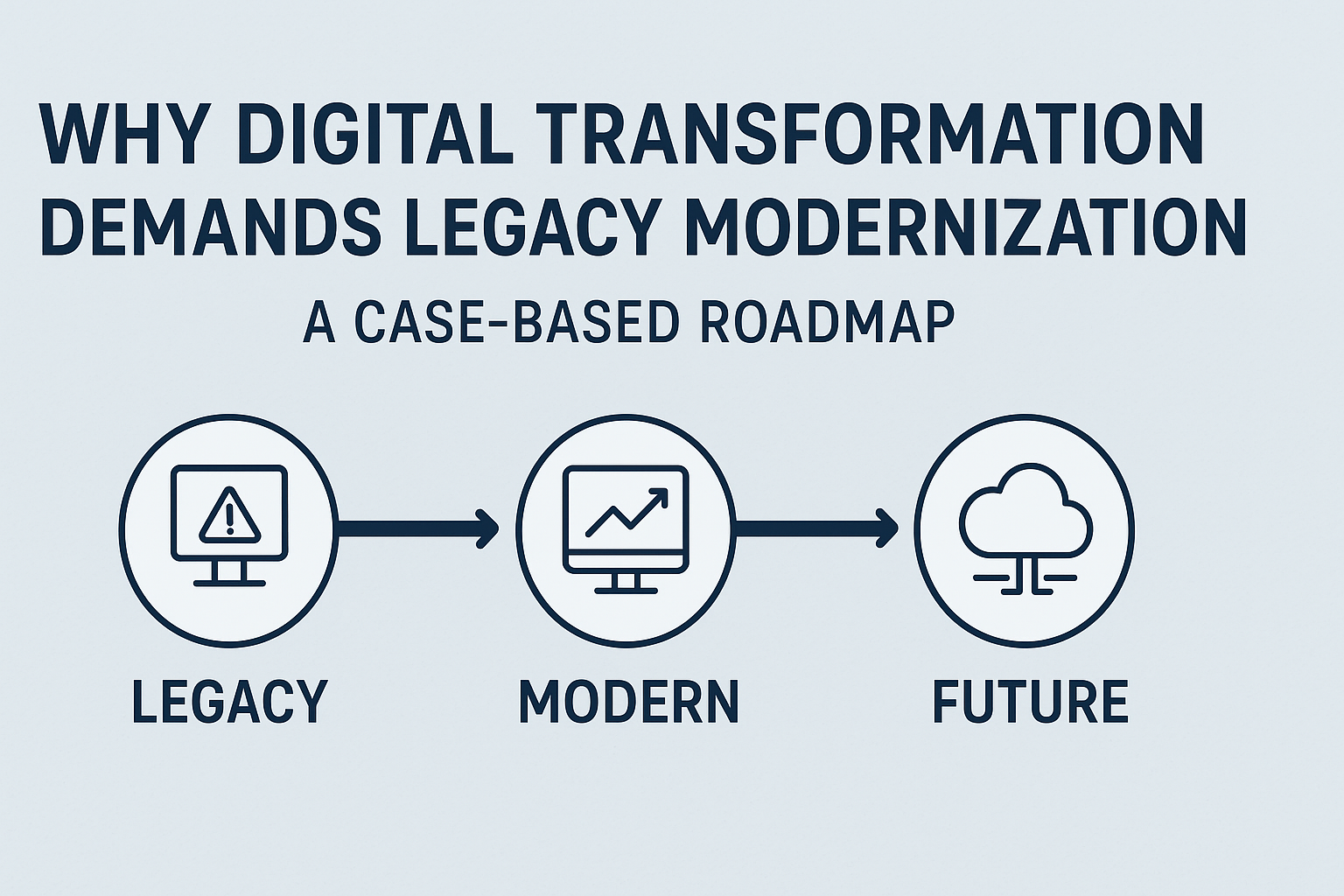Every business leader today knows that “digital transformation” is not optional — it’s a competitive necessity. Yet, many organizations still rely on legacy systems built for a different era. While these systems may continue to “work,” they often lack the scalability, security, and flexibility required in today’s fast-moving markets. The challenge? You can’t fully transform digitally if your core technology is stuck in the past.
Step 1: Audit — Know Where You Stand
Before any modernization effort, start with a comprehensive IT audit.
- Inventory systems: Identify all software, hardware, and integrations currently in use.
- Assess risks: Look for vulnerabilities, compliance gaps, and performance bottlenecks.
- Cost analysis: Calculate the true cost of maintaining legacy systems, including downtime and manual workarounds.
Case Example: A mid-sized bank discovered that its legacy core banking system cost more in emergency maintenance each year than a full migration would have — but they only realized this after a formal audit.
Step 2: Plan — Define the Future State
Modernization without a plan is just guesswork.
- Set goals: Improve scalability? Enhance customer experience? Reduce costs?
- Choose an approach: Re-platform, re-host, re-architect, or replace entirely.
- Map dependencies: Ensure new systems integrate seamlessly with other tools.
Case Example: A retail chain planned a gradual migration from its on-premise ERP to a cloud-based system over 18 months, allowing staff to adapt while avoiding operational downtime.
Step 3: Modernize — Execute with Minimal Disruption
With a solid plan, modernization can move forward.
- Pilot first: Test new systems with a small group before full rollout.
- Ensure data integrity: Use automated migration tools and verification steps.
- Train teams: Modern tools only deliver value if people know how to use them.
Case Example: A healthcare provider migrated patient data to a secure cloud platform in stages, reducing downtime to less than 2 hours during the entire process.
Conclusion
Legacy modernization is not just an IT project — it’s a business strategy. By following an audit → plan → modernize roadmap, organizations can protect operational stability while unlocking the full potential of digital transformation. The sooner you start, the faster you can compete in an increasingly digital world.
If you’re ready to discuss your legacy modernization needs, Techrays Labs can help you design a roadmap tailored to your business goals.


